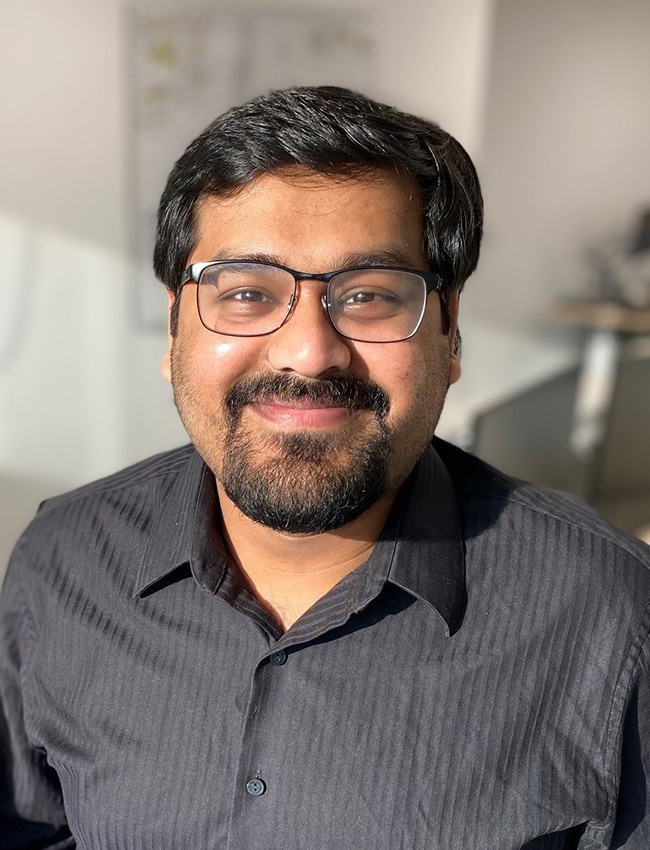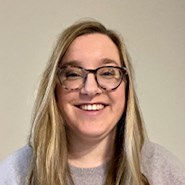Edited by Celeste C.B. Bennett

The field of engineering has been on Ahmed’s radar for as long as he can remember. Born and raised in Bangladesh, his family encouraged only two career options: medicine or engineering. He knew that medicine wasn’t for him, so he enrolled in the engineering program at Bangladesh University of Engineering and Technology for his undergraduate degree and then attended West Virginia University for his master’s in civil engineering.
And even though he wasn’t thrilled by the field initially, he grew to enjoy and respect the work he does today. It’s a plus, too, that he makes his family back in Bangladesh proud.
Ahmed is licensed in Texas, Maryland, and Nevada, and is a 2023 New Faces of Civil Engineering-Professional.
What are the responsibilities that come with your job?
I am a traffic engineer with HDR and currently work as augmented staff for the Nevada Department of Transportation. My focus is on traffic engineering and operations, which includes design, simulation, modeling, planning, safety, and project management. I am on the Signals, Lighting, and Intelligent Transportation Systems team, also called the SLI team, at NDOT. I am responsible for leading SLI design efforts and coordinating with design teams, ensuring we are on budget and schedule. And sometimes, based on need, I mentor younger engineers on their assignments.
How does your position differ from previous jobs you’ve had?
After getting my bachelor’s degree in civil engineering from BUET, I was a lecturer and research assistant. One of the main differences of my job today compared with academia is that it was more lab-oriented work, experimenting on hypothetical concepts, which took significantly longer to get to the implementation phase. Now, I design traffic engineering components and complete assignments that are implemented/constructed as soon as possible.
What technical skills helped you achieve this position?
I focused a lot in the beginning on becoming proficient in the numerous software tools I would need, like MicroStation and AutoCAD for design. On the transportation or traffic engineering side, I learned Synchro, Vissim, Vistro, Interactive Highway Safety Design Model, GuideSIGN, and many more. I did my best to master the technical software tools related to design, safety, planning, and modeling. It’s an ongoing process, and I still learn new tools occasionally.
What nontechnical skills helped you achieve this position?
A critical nontechnical tool is inquisitiveness. You must be curious about new things. You also must be interested in taking on new roles and assignments that will challenge you to learn new technical tools and discover new ideas. Another key skill to develop early on in your career is people management. In my position, I communicate with clients, stakeholders, and design teams and incorporate multiple perspectives on projects. And in any project management environment, communication is critical. Before I became an engineer, I was involved with one of the biggest engineering student groups in Bangladesh — Engineering Students Association of Bangladesh — which comprised all university-level engineering students. I was one of the leaders for that group for almost three years, which helped me learn how to communicate well.
How did your education — formal or informal — help you prepare for this role?
What matters most is not necessarily your formal education, although you do need that. It’s how you interpret your education. In school, you learn scientific principles or study scientific journals for your research or course work. In a job, you implement that education in real life. I observe and think critically about the work I’m doing in relation to my education, whether it’s directly related to what I studied or not. And that has helped me feel confident in my knowledge and skill sets.
What quote or principle do you try to live by in your work or personal life?
I have a motto for my life which is, “Never say no to an opportunity.” It’s the title of an article I have written for HDR's quarterly publication to tell the story of how I got involved with ASCE. I also believe success will come at its own pace, so be patient. We tend to become impatient when we work hard to achieve something and we give it our best effort, but we don’t see results right away.
Who or what inspired you to pursue the field of engineering?
One of the reasons I decided to pursue civil engineering is because my eldest brother is an electrical engineer and assistant professor of electrical engineering in Bangladesh. The other reason is because I wanted to prove to myself and my family that I could get a bachelor’s in engineering from the most prestigious college in my home country, which is comparable to Massachusetts Institute of Technology, to better understand how significant that achievement is.
Where do you think the field of civil engineering is headed and where would you like it to go?
Because of the funding of the general civil engineering sector that’s promised in the Infrastructure Investment and Jobs Act, we’ll see a lot of infrastructure improvements and an increase in engineering jobs. The whole industry will benefit because there will be plenty of work to do. I’m also excited about the focus on future sustainability and resiliency of the transportation sector, specifically because of the emergence of alternative fuel technologies, electric vehicles, autonomous vehicles, and urban air mobility. I’m hopeful there will be lots of room for creativity and innovation in my field in the next five to 10 years.
Celeste Brown is the writer/editor for Civil Engineering print magazine.
This article first appeared in the November/December 2023 print issue of Civil Engineering as “Education Is Only the Beginning.”
ASCE values the involvement and ideas of early career professionals and sees its younger members as the future of the Society. Learn more.



